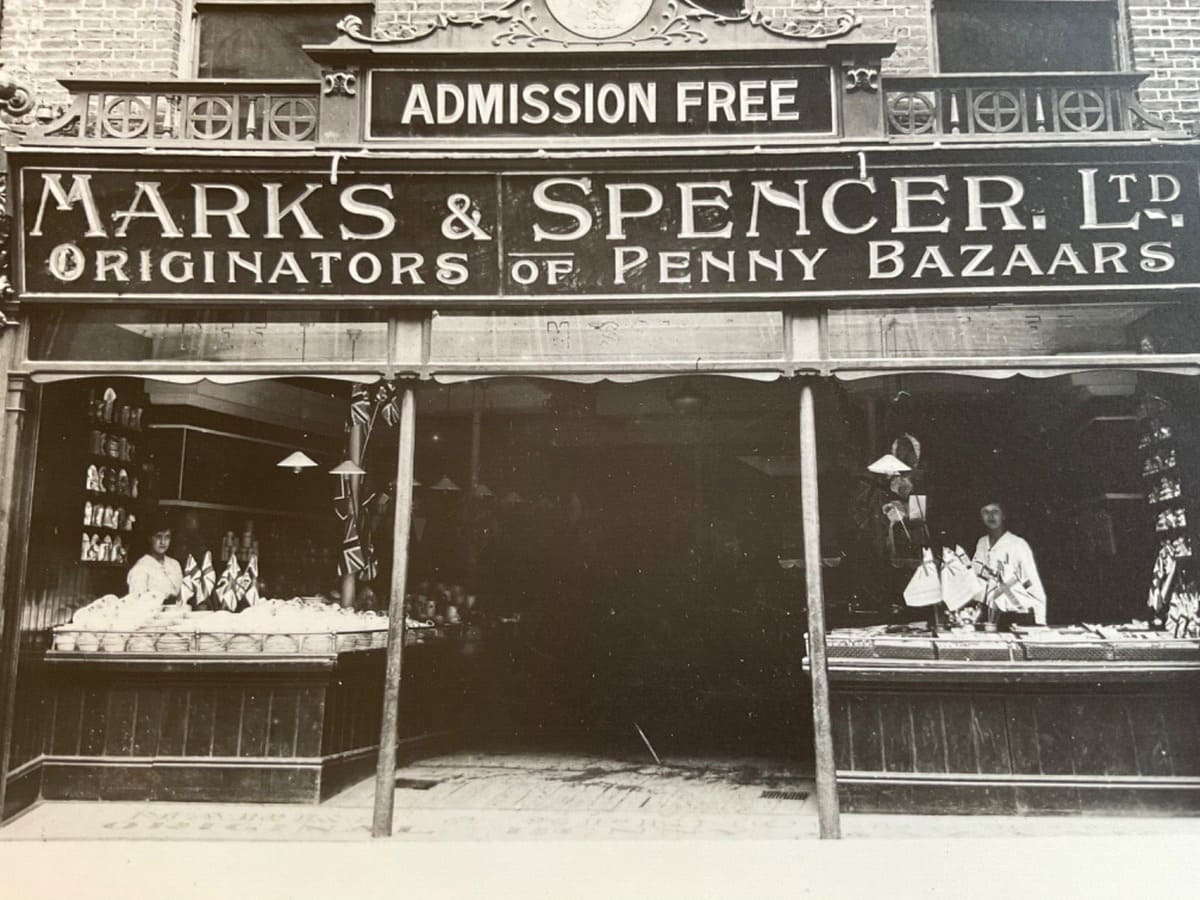Founded in 1884 by Michael Marks and Thomas Spencer in Leeds, Marks & Spencer (M&S) has a rich history that reflects its evolution from a small market stall to a major retail giant. Over the decades, the company has not only expanded its product offerings but also transformed its branding to adapt to changing market trends and consumer preferences. Despite recent challenges and store closures, M&S remains a beloved institution in British retail, known for its quality clothing and food products. As of 2024, M&S continues to streamline its operations, aiming to reduce its locations to 180 full-line and 420 food stores in the UK, a strategic move to cut costs and enhance efficiency.
The legacy of M&S is marked by significant milestones and innovations that have shaped its identity. In 1998, it became the first British retailer to achieve a pre-tax profit of over £1 billion, although it later faced a surprising downturn. Leadership changes in the early 21st century saw Marc Bolland take the helm in 2010, steering the company through a period of recovery and modernization. This era also witnessed a shift in M&S’s product strategy, with a focus on increasing food sales and introducing branded goods such as Kellogg’s corn flakes. Despite these efforts, the company has continued to adapt to the evolving retail landscape, including closing over 100 stores by 2022 and announcing further reductions as part of its turnaround plan.
A key aspect of M&S’s brand history is its iconic “St Michael” label, introduced in 1928 to honor co-founder Michael Marks. This brand became synonymous with quality and innovation, featuring pioneering use of synthetic fibers like Tricell and Courtelle in the mid-20th century. The St Michael brand dominated M&S’s product range until it was eventually phased out, reflecting the company’s ongoing efforts to stay relevant in a competitive market. In the 21st century, M&S has continued to innovate with successful ventures like the Per Una fashion line, while also acquiring new brands such as Jaeger to bolster its clothing division. This dynamic history of adaptation and resilience underscores M&S’s enduring presence in the retail industry.
Famous Marks & Spencer Commercial
How to tell if Marks & Spencer is vintage from the logo
Marks & Spencer, commonly known as M&S, has evolved its logo numerous times since its inception. This evolution reflects the brand’s adaptation to changing market trends and customer preferences. By examining these logos, one can determine the era of a Marks & Spencer product, which is particularly useful for vintage enthusiasts.
1930 to 1954 Marks & Spencer logo
- This early logo features a round emblem with the initials “M&S” prominently displayed.
- The design is quite ornate and artistic, with intricate lines and curves.
- This logo reflects the brand’s traditional and classic aesthetic of the early 20th century.

1930 to 1954 Marks & Spencer logo
1954 to 1975 Marks & Spencer logo
- The logo retains the round emblem shape but adopts a simpler, more modern design.
- The initials “M&S” are more straightforward, with cleaner lines and less decoration.
- This period marks a transition towards a more contemporary look for the brand.

1954 to 1975 Marks & Spencer logo
1975 to 1988 Marks & Spencer logo
- The logo features the full brand name “Marks & Spencer” in a serif font.
- The use of a serif font gives it a formal and classic appearance.
- This era signifies the brand’s growth and establishment in the market.

1975 to 1988 Marks & Spencer logo
1988 to 2000 Marks & Spencer logo
- The logo uses a more modern and streamlined serif font.
- The text “Marks & Spencer” is evenly spaced and balanced.
- This design reflects the brand’s effort to maintain a contemporary and professional image.

1988 to 2000 Marks & Spencer logo
2000 to 2007 Marks & Spencer logo
- The logo introduces a more minimalist approach with the initials “M&S”.
- The use of black and white colors emphasizes simplicity and elegance.
- This logo marks a significant shift towards a modern and sleek brand identity.

2000 to 2007 Marks & Spencer logo
2004 to 2014 Marks & Spencer logo
- The logo features the full brand name “Marks & Spencer” in a sans-serif font.
- The letters are thin and evenly spaced, giving a fresh and clean look.
- This design reflects the brand’s modernization and appeal to a younger demographic.

2004 to 2014 Marks & Spencer logo
2014 to now Marks & Spencer logo
- The current logo uses the initials “M&S” with the tagline “EST. 1884”.
- The font is bold and modern, with a focus on simplicity and readability.
- This logo represents the brand’s heritage while maintaining a contemporary appeal.

2014 to now Marks & Spencer logo
How to tell if Marks & Spencer is vintage from the tags
Marks & Spencer, often known for its quality and reliability, has evolved its branding over the decades. The tags on their garments reflect this evolution and can help determine the vintage of a piece. Here’s a guide to identifying Marks & Spencer’s vintage clothing from the tags based on the images provided.
Having trouble identifying vintage tags or labels? Upload a picture on our vintage tag identification page, and we’ll assist you!
1980s vintage Marks & Spencer tags
- Features “St Michael from Marks & Spencer” branding prominently.
- Tags often include “Pure New Wool” indicating the material.
- Tags are rectangular and typically white with grey or green text.
- Some tags include additional details like size indicators.

1980s Marks & Spencer tags
1990s vintage Marks & Spencer tags
- Continues the “St Michael from Marks & Spencer” branding.
- Rectangular tags with a minimalist design.
- Uses bold serif lettering for the brand name.
- Additional tags may indicate the size separately.

1990s Marks & Spencer tags
2000s vintage Marks & Spencer tags
- Modernized look while retaining the “St Michael from Marks & Spencer” branding.
- Tags often include “Petite Fit” or other specific fit indicators.
- Uses a variety of colors, but often sticks to white backgrounds with grey text.
- Size indicators are still commonly included separately from the main tag.

2000s Marks & Spencer tags




